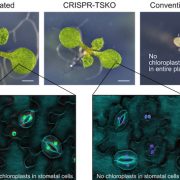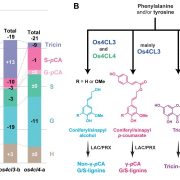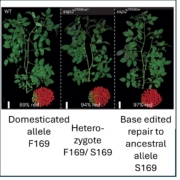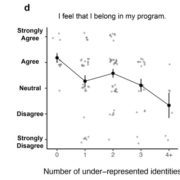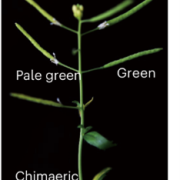An experimental protocol for teaching CRISPR/Cas9 in a post-graduate plant laboratory course without sequencing (Biochem Mol Biol Educ)
 Experience is the best teacher, so hand-on learning is invaluable for students of biology. If you have the opportunity to teach with a laboratory course and haven’t yet incorporated a module that incorporates CRISR/Cas9, you’re in luck! Here, Mayta et al. share the design of the laboratory course they developed in which students design a knockout of a phytoene desaturase-encoding gene PDS3, which results in white plants or sectors. The module involves four tasks, each demonstrating a different aspect of gene editing (design of sgRNAs, transformation, phenotyping, and DNA extraction and analysis). As the authors observe, they used a gel-based assay to identify edited alleles, obviating the need for more expensive sequencing. Although the authors designed this course for post-graduates, I believe it could also be carried out by advanced undergraduate students. (Summary by Mary Williams @PlantTeaching) Biochem Mol Biol Educ. 10.1002/bmb.21659
Experience is the best teacher, so hand-on learning is invaluable for students of biology. If you have the opportunity to teach with a laboratory course and haven’t yet incorporated a module that incorporates CRISR/Cas9, you’re in luck! Here, Mayta et al. share the design of the laboratory course they developed in which students design a knockout of a phytoene desaturase-encoding gene PDS3, which results in white plants or sectors. The module involves four tasks, each demonstrating a different aspect of gene editing (design of sgRNAs, transformation, phenotyping, and DNA extraction and analysis). As the authors observe, they used a gel-based assay to identify edited alleles, obviating the need for more expensive sequencing. Although the authors designed this course for post-graduates, I believe it could also be carried out by advanced undergraduate students. (Summary by Mary Williams @PlantTeaching) Biochem Mol Biol Educ. 10.1002/bmb.21659


